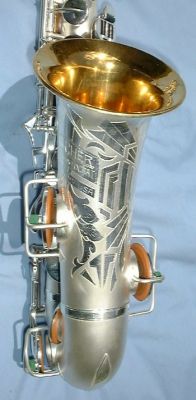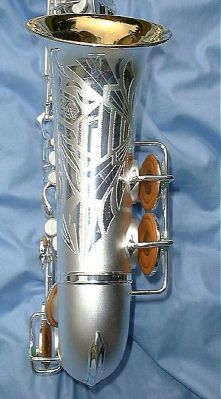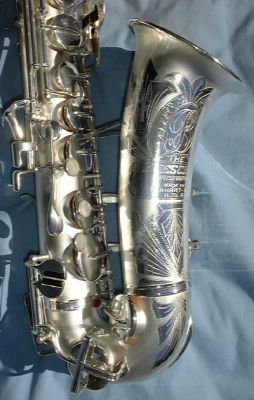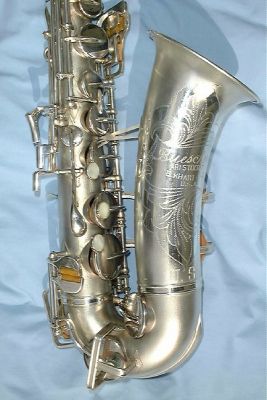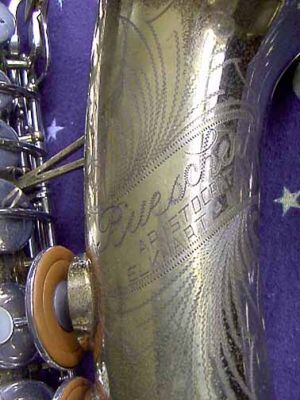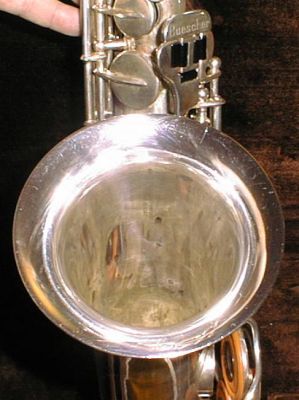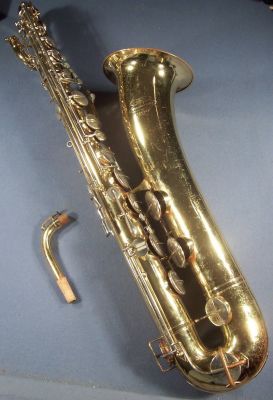The Aristocrat is generally considered to be the "Classical Pro" horn from Buescher. Alternately, it is described as having a bore "more like" an A. Sax instrument -- as a matter of discussion, some folks say that the only difference between the "Big B" model and the "Series III" is that the "III" does not have the mythical "parabolic bore".
Speaking of the "Big B" and "Series III", I happened to have had both of these horns at the same time in my fat, grubby hands: every point I checked was identical: posts, keywork, relative heights, lyre holder. Everything was the same except for the engraving. The necks were even interchangeable.
It is possible that there was a difference in bow or bell shape/height, but I was unable to detect it. I suppose that there may also be a change in the shape of the bore, but I'd have needed calipers to detect it.
Another thing I like to point out is that the Aristocrat is not "better" or "worse" than the 400: it's just different. The 400 was designed to be a "jazzier" horn and it's somewhat squatter and has the interestingly-designed "behind the bell" keywork (a feature incorporated into the Aristocrat design, briefly, in the "Series IV").
My opinion is that the "Series III" is probably the last really good Aristocrat. The horns that followed were slowly morphing into the Bundy II.
The Aristocrat also introduced the world to the screw-in, gold-plated Norton spring. These springs are so nice that on the "Big B" alto I mentioned I had -- which had major damage and areas of oxidation -- the springs were still very springy and the horn had a nice feel to it. Combine that with the snap-on pads and you've got an easily maintained horn.
(However, I still think that the G# cluster is one of the most cumbersome and difficult to use -- especially for those of us that have problems with their pinky finger: mine's been broken twice and I can't push down too hard with it.)
You may also have noticed that there aren't "officially" Aristocrat basses, sopranos or sopraninos. When someone wanted one of these items, Buescher would trot out the old True Tone tooling and make it with that -- and engrave with the new engraving and (sometimes) update the keywork a bit. See, for instance, this beautiful bass from www.vintagesax.com.
=========
Notes on the Series IV, from paulwl, a poster on Sax-on-the-Web. My notes are in red:
I have before me as I write this a 2pp spread Buescher magazine ad from the Sept. 29, 1960 issue of Down Beat Magazine advertising "THE MOST COMPLETE LINE OF SAXOPHONES of All-American Parts and Workmanship." The ad is illustrated with black and white photo cuts of the following horns:
S-90 Bass (keyed to high Eb with split bell keys and no Bb-bis, like True-Tones)
S-80 Baritone / S-20 Tenor (model 157)/ S-1 Alto (model 141) (all with 400-type large flare bells and bell keys facing the stack)
S-50 Bb Soprano / 123 Eb Sopranino (both straight -- horns appear to have no side or palm keys!)
| 
